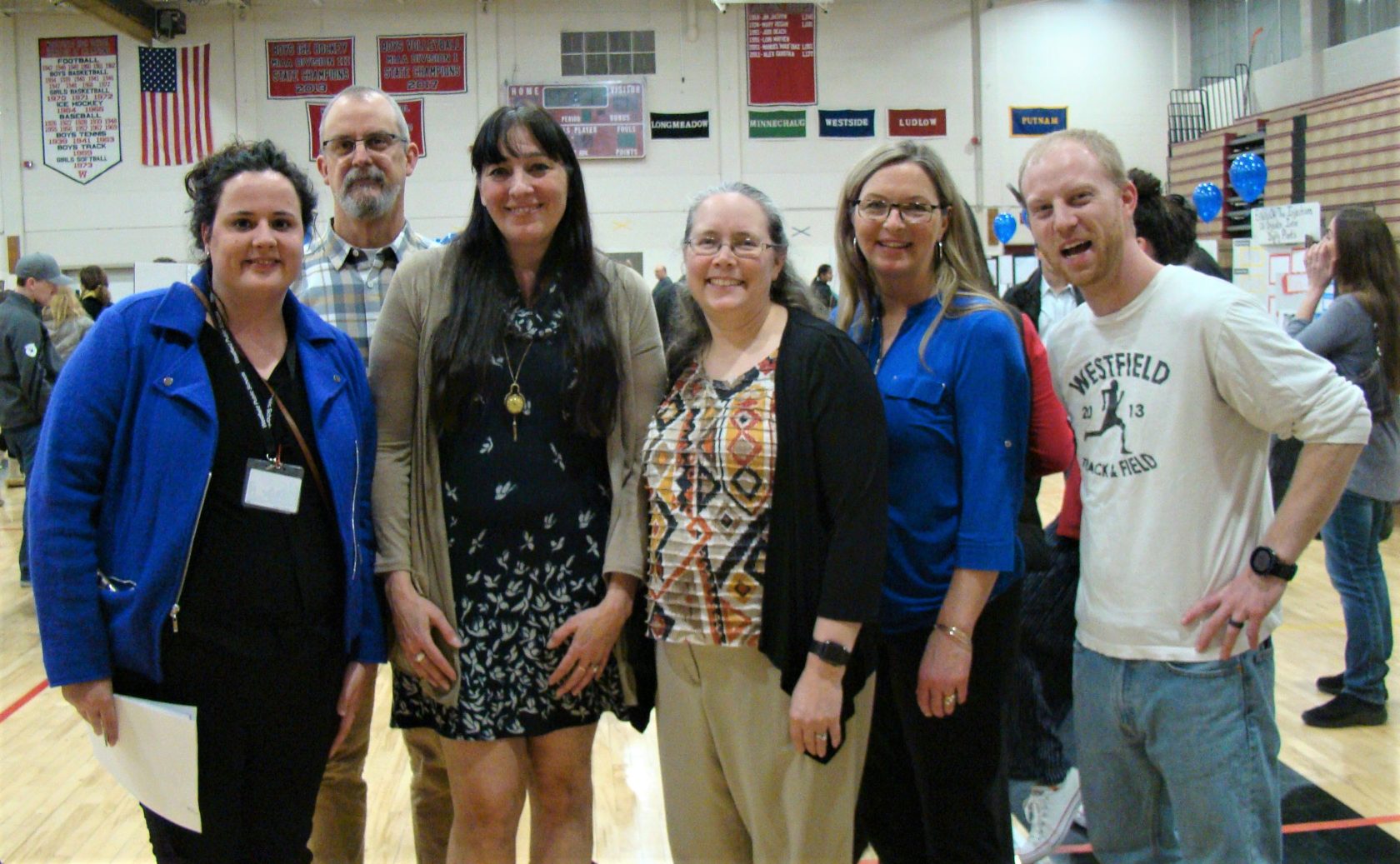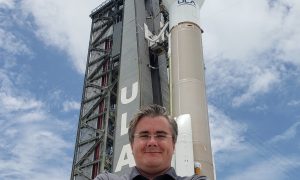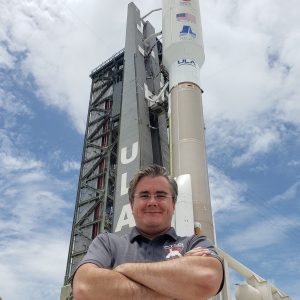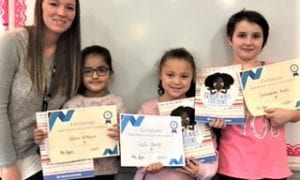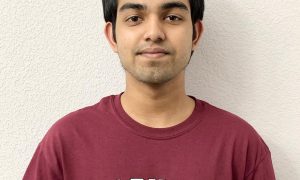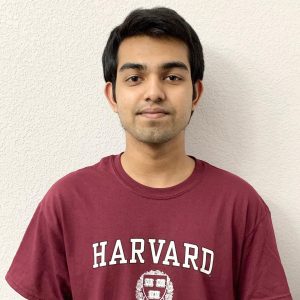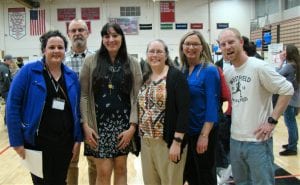
Lauren Figy, STE supervisor with WHS Science teachers Jon Tyler, Kate Pawul, Renee Sweeney, Deb Aldrich and Ben Hatch. (Photo by Amy Porter
WESTFIELD – The Westfield High School’s Annual Science and Engineering Fair was held on Thursday, with an open house for the public at 5:30 p.m.to view the projects students had worked on for many months. Lauren Figy, Supervisor of Science, Technology and Engineering said there were 241 total projects exhibited this year, among them 41 from Westfield Technical Academy, who participated for the first time in the fair.
WHS Science teacher Renee Sweeney said she enjoyed having the Westfield Technical Academy students participate. “They did a great job of applying the vocations they’re going into, into their projects,” Sweeney said.
Figy said the WTA students are going to set up an exhibit at their school during the next academic week, to share their projects with the other students, in what she called “a totally cool addition” to the program.
95 judges, the most ever, spent the day on Thursday interviewing students about their projects. Figy said the diverse group of judges came from throughout the community, representing all different disciplines. As part of the STEAM (Science, Technology, Engineering, Arts and Math) event, the Show Choir serenaded the judges at a lunch which was prepared by Margaret Toomey’s culinary arts class. The Art Department also set up an exhibit in the gym, entitled “How colors make you feel.”
“I was very impressed with the organization and diversity of the judging field, and the projects the kids put out. I learned some things today,” said City Council President Ralph J. Figy, who participated as a judge.
Thirty top projects were chosen on Thursday and marked with blue balloons. Lauren Figy said the scoring was so close, the top 30 were going to present again to the science faculty on Friday.
“They will be able to get feedback on what to change before the regionals,” said WHS Science teacher Kate Pawul. The top 20 projects were then selected to go to the Region I Fair at the Massachusetts College of Liberal Arts in North Adams.
First place winner, Yana Chumakova’s project was called “Piezoelectricity,” which is the electric charge that accumulates in certain solid materials in response to applied mechanical stress. The science department was buzzing about her project, but Yana was not able to attend Thursday’s open house due to a scheduling conflict.
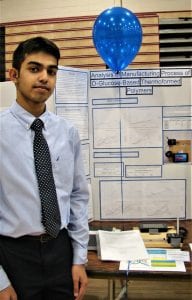
Sophomore Suvin Sundararajan received a second place award for studying an ecologically friendly plastic substitute. (Photo by Amy Porter)
Other students who were able to attend, were more than happy to talk about their projects.
Sophomore Suvin Sandararajan won second place for his project, called “Analysis of the Manufacturing Process of D-Glucose-based Thermoformed Polymers,” which analyzed the manufacture of plastics made from recyclable materials. His project was a continuation from the previous year, when he sought to create an organic plastic substitute, using cornstarch, glycerin, water and vinegar in changing proportions to create a more environmentally friendly plastic.
This year, Suvin’s project tested more of the durability and the heat properties of the polymer substitute. He added hydro-chloric acid to increase the strength of the starch-based plastic. Borrowing parts from the University of Massachusetts, he built a tensile-strength apparatus to test it for industry standard.
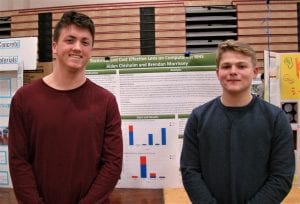
Third place finishers Brendan Morrissey and Aiden Chisholm studied bacteria on computer keyboards. (Photo by Amy Porter)
Senior third place winners Brendan Morrissey and Aiden Chisholm also did a continuation of their project from last year, called the “Statistical and Cost Effective Lens on Computers at WHS.”
In last year’s project, they analyzed the microbes cultured from the keys of a computer. This year, they swabbed a bunch of computers at WHS, those of both faculty and students, then did a statistical and cost effectiveness analysis on them.
Aiden said they expected to find that student computers, which generally have more users, would have more bacteria than those of teachers. They found all the computers had the same amount of bacteria, but the students’ computers had gram plus positive bacteria with a thicker cell wall, which allows antibiotics to be more effective, which is a positive.
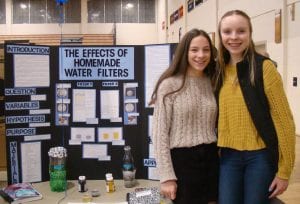
Freshmen Abby Menzel and Emma Petzold studied the effectiveness of homemade water filters. (Photo by Amy Porter)
Brendan used Fermi estimates to see how much it would cost the district to buy Clorox disinfectant wipes, to keep the computers clean. They came up with a figure of $1,184, which Brendan said is .022% of the total district budget, and 1.05% of the total technology budget. Aiden said they hope to raise the money through a grant to buy the wipes.
Among the top 30 projects, freshmen Abby Menzel and Emma Petzold presented “The effect of Homemade Water Filters.” The students built two homemade filters, to filter out E.coli bacteria, samples of which were provided by their teacher. They said the Filter 1 worked, because it had more layers, including small rock, sand, charcoal and cotton balls. Filter 2 came back yellow, showing E.coli contamination.
“We believe the sand was what filtered out the bacteria, which was lacking in Filter 2,” Abby and Emma said.
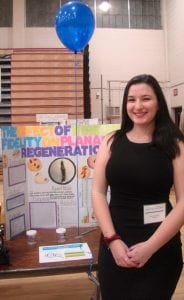
Junior Imma Kayzakian and “The Effects of Wireless Fidelity on planaria regeneration.” (Photo by Amy Porter)
Junior Imma Kayzakian studied “The effects of Wireless Fidelity on planarian regeneration.” Imma said her hypothesis tested whether Wi-Fi would slow down the ability of planaria, or tapeworms, to regenerate. She found the same results with and without Wi-Fi. She said the results were important, because planaria have stem cells.
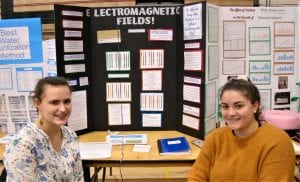
Sophomore Mackenzie Rae and junior Emilie Pease looked at the Electromagnetic fields of cell phones. (Photo by Amy Porter)
Sophomore Mackenzie Rae and junior Emilie Pease tested Electromagnetic Fields, to see if cell phones emit enough electro-magnetic radiation to cause cancer. They found that cell phones do emit radiation that exceeds the safe level of 42 Hz (hertz) of radiation. Their data showed that cell phones emit greater than 170 Hz.
Emilie said they discovered the potential that humans could be harmed by longer exposure to cell phones.
“To a lot of people this wasn’t a surprise, but hearing how much it was is concerning,” said Mackenzie.
The complete list of top 20 finalists:
1. Yana Chumakova
2. Suvin Sundararajan
3. Aiden Chisholm and Brendan Morrissey
4. Emily Bone.
5. Tetyana Shvyryd
6. Ellen Jury and Nina Prenosil
7. Anthony Suhocki
8. Catherine Morrissey and Elizabeth Regnier
9. Stefan Goretskiy
10. Imma Kayzakian
11. Trent Stucenski
12. Mackenzie Rae and Emilie Pease
13. Stephanie Squeflia and Nicholas Stathatos
14. Nicholas, Duncan and Stephen Hinck
15. Charles Przechocki
16. Nicole Servetnik
17. Abby, Menzel and Emma Petzold
18. Zachariah Gravel-Blaney and Chandler Pedolzky
19. Catherine Bean
20. Abigail Goyette

